From my experience, 57°C isn’t hot for a GPU. My GPU stays around this temperature even during heavy gaming, indicating efficient cooling and normal operation.
No, 57°C is not hot for a GPU. It’s within the safe and normal temperature range for most GPUs, especially during light to moderate tasks and even some gaming. Higher temperatures only become an issue when they exceed 85°C.
In this article, we’ll discuss “is 57 C hot for a GPU?, comparing GPU temperature, how hot is too hot for a GPU, and also what is the maximum safe temperature for GPUs”
What Is A Safe Temperature Range For GPUs?
A safe temperature range for GPUs is typically 30°C to 50°C when idle and 60°C to 85°C under load, such as gaming or rendering. Staying within this range ensures efficient performance and avoids overheating, which can lead to thermal throttling or long-term hardware damage.
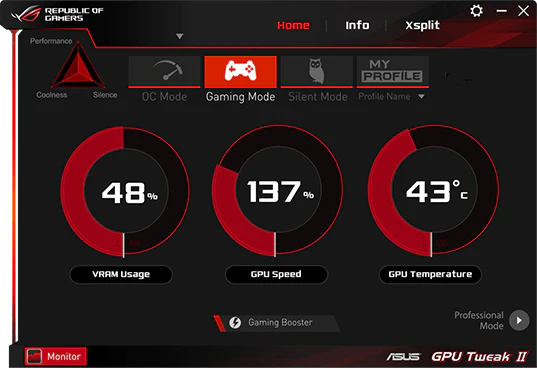
Why 57°C Is Not Hot For A GPU?
1. Manufacturer Design:
GPUs are designed to handle temperatures up to 90°C-100°C safely. 57°C is comfortably within this range, indicating efficient operation without any thermal stress.
2. Cooling Systems:
Modern GPUs come with advanced cooling solutions like high-quality fans and heat sinks that effectively manage heat. At 57°C, the cooling system is doing its job well, keeping the GPU at a safe and optimal temperature.
3. Environment and Usage:
The temperature of a GPU can vary based on the ambient temperature and usage. For normal tasks and moderate gaming, a GPU can easily reach 57°C without risk, as it’s part of the GPU’s normal operating range.
Also Read: Runtimeerror: No GPU Found. A GPU Is Needed For Quantization. – Here’s How to Fix It!
Factors Affecting GPU Temperature:
1. Workload:
The intensity of tasks running on the GPU directly affects its temperature. Light tasks, like web browsing, generate minimal heat, whereas gaming or rendering workloads push the GPU harder, causing it to heat up more.
2. Ambient Temperature:
The temperature of the room where the computer is located can impact the GPU’s temperature. Higher room temperatures can lead to higher GPU temperatures, as it absorbs more heat from its environment.
3. Cooling System Efficiency:
The quality and efficiency of the cooling system (fans, heatsinks, liquid coolers) play a crucial role. A better cooling system can keep the GPU cooler even under heavy loads by dissipating heat more effectively.
4. Thermal Paste:
Thermal paste helps transfer heat from the GPU to the cooler. Over time, it can dry out or lose effectiveness, leading to higher GPU temperatures. Reapplying thermal paste periodically ensures efficient heat transfer.
5. Airflow In The Pc Case:
Good airflow within the PC case is essential for keeping temperatures low. Properly placed fans help move cool air over the GPU and expel hot air, preventing heat buildup inside the case.
Comparing GPU Temperatures: Is 57°C Cool, Normal, Or Hot?
| Temperature | Category | Description |
| Below 50°C | Cool | Ideal for idle or light tasks. |
| 50°C – 70°C | Normal | Great for gaming and moderate workloads. |
| 70°C – 85°C | Warm but safe | Acceptable for heavy gaming or rendering. |
| Above 85°C | Too hot | Potential for thermal throttling or damage. |
At 57°C, your GPU is firmly in the normal and safe zone, making it far from being “hot.”
Is 57 C Hot For A GPU?
No, 57°C is not hot for a GPU. Most GPUs are designed to operate efficiently at temperatures up to 90°C-100°C. At 57°C, the GPU is well within its safe temperature range, even during moderate gaming or regular tasks. It indicates good cooling and normal GPU health, without the risk of thermal throttling.
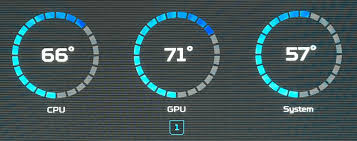
When Should You Worry About GPU Temperatures?
You should worry about GPU temperatures if they consistently exceed 85°C, as this can cause thermal throttling, reduced performance, or long-term damage. Also, watch for signs like frequent crashes, loud fan noise, or sudden slowdowns. Regular monitoring and maintenance can help prevent overheating and keep your GPU running efficiently.
Tips to Maintain Optimal GPU Temperatures:
If you want your GPU to run efficiently and avoid high temperatures, follow these tips:
1. Ensure Proper Airflow:
Keep your PC case clean and organize cables to prevent obstruction. Invest in quality case fans for better ventilation.
2. Clean the GPU and Case Regularly:
Dust can block vents and fans, reducing cooling efficiency. Clean your components every few months.
3. Replace Thermal Paste:
If your GPU is older, replacing the thermal paste can restore its cooling performance.
4. Monitor Temperatures with Software:
Use tools like MSI Afterburner, HWMonitor, or GPU-Z to track temperatures in real time.
5. Consider Upgraded Cooling:
For gamers or content creators, aftermarket coolers or liquid cooling can help maintain lower temperatures.
Also Read: Is 60 Degrees Celsius Hot For A GPU – Keep Your GPU Cool!
What Is A Safe GPU Temperature?
A safe GPU temperature typically ranges from 30°C to 85°C. Below 50°C is ideal for light tasks, while 50°C to 70°C is normal for gaming. Heavy workloads may reach 70°C to 85°C, which is safe. Temperatures above 85°C can cause overheating, reducing performance or lifespan. Keep cooling systems efficient.
Is 57 Degrees Celsius Hot For A GPU?
57 degrees Celsius is not hot for a GPU. It is a safe and normal temperature during gaming or moderate workloads. Most GPUs can handle temperatures up to 85°C without issues. At 57°C, your GPU is working efficiently, indicating good cooling and no risk of overheating or damage.
Is 57°C Too Low For A GPU?
No, 57°C is not too low for a GPU. It’s a perfectly safe and normal temperature, especially during moderate tasks or light gaming. Modern GPUs are designed to operate efficiently at a wide temperature range, and 57°C indicates the cooling system is working well, keeping the GPU in an optimal state.
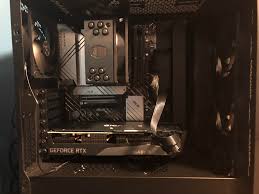
How Hot Is Too Hot For A GPU?
A GPU is too hot when it exceeds 85°C during regular use. High temperatures can lead to performance drops (thermal throttling) and reduce the GPU’s lifespan. Most GPUs are designed to handle up to 90°C-100°C, but keeping temperatures below 85°C ensures safe, efficient, and long-lasting operation.
Is 55 Celsius Good While Gaming?
Yes, 55°C is good while gaming. It’s well within the normal temperature range for GPUs under load, which is usually between 50°C and 70°C. This temperature means your GPU is running efficiently with good cooling, ensuring stable performance without any risk of overheating or damage.
Why Does My GPU Reach 57°C Even When Idle?
Your GPU might reach 57°C when idle due to background tasks, poor airflow, or high room temperatures. Some GPUs also have fans that stop spinning at lower loads, making the temperature slightly higher. Cleaning dust, improving airflow, and checking for unnecessary programs can help keep idle temperatures lower.
What Is The Maximum Safe Temperature For GPUs?
The maximum safe temperature for most GPUs is 85°C. Some GPUs can handle up to 90°C or 100°C, but staying below 85°C is ideal for long-term performance and reliability. Keeping the GPU cool with proper airflow, clean fans, and efficient cooling ensures it works efficiently without overheating.
Also Read: What Should My GPU Temperature Be – Stay Cool, Check GPU!
Can Gaming Cause A GPU To Exceed 57°C?
Yes, gaming can cause a GPU to exceed 57°C because games demand high performance, making the GPU work harder. This increases heat production. While light games may keep temperatures around 57°C, more intense games can push it to 70°C-85°C, which is still safe for most GPUs.

Should I Keep My GPU At 57°C?
Yes, keeping your GPU at 57°C is perfectly fine. This temperature is within the safe range and ideal for light to moderate tasks like gaming or browsing. It won’t harm your GPU or reduce its performance, making it a good operating temperature for long-term use.
Can A GPU Work Efficiently At 57°C?
Yes, a GPU can work efficiently at 57°C. This temperature is within the normal range for most tasks, including light gaming or everyday use. It ensures stable performance without overheating. Since it’s far below the danger zone, the GPU remains safe, reliable, and efficient at this temperature.
Is 57°C A Common Temperature During Gaming?
Yes, 57°C is a common temperature during light or moderate gaming. It shows that your GPU is working efficiently without much stress. For heavy gaming, the temperature usually rises to 70°C or more, but 57°C indicates the GPU is staying cool, especially with good airflow and cooling systems.
Does 57°C Mean My GPU Is Underperforming?
No, 57°C does not mean your GPU is underperforming. It is a normal and safe temperature, especially during light tasks or moderate gaming. GPUs are designed to handle much higher temperatures, so 57°C indicates your GPU is working efficiently and staying cool without any performance issues.
Can I Overclock My GPU If It Stays At 57°C?
Yes, you can overclock your GPU if it stays at 57°C, as this is a cool and safe temperature. Overclocking increases performance but also raises heat levels. Monitor the temperature closely after overclocking, ensuring it stays below 85°C to avoid damage and maintain stable performance.
Also Read: What Temperature Is Bad For GPU – Protect Your GPU Today!
Is 57°C Safe For My GPU’s Long-Term Health?
Yes, 57°C is safe for your GPU’s long-term health. It’s well within the normal operating temperature range for GPUs during moderate tasks and gaming. Staying at this temperature won’t harm the GPU and ensures it operates efficiently without thermal throttling or reduced lifespan.
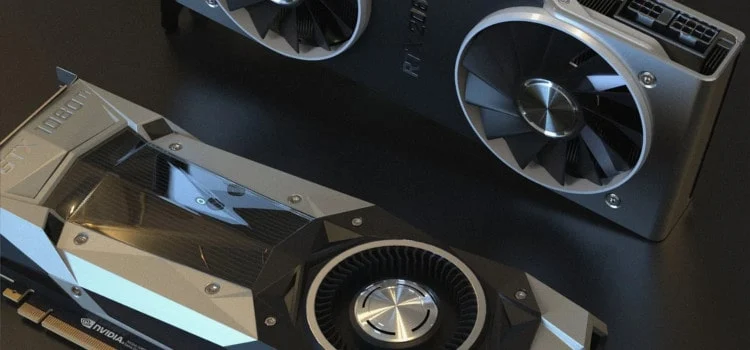
Will My GPU Fan Stop At 57°C?
Most GPU fans don’t stop at 57°C. Many GPUs are designed to keep fans running to maintain cooling. At this temperature, fans typically slow down or adjust speeds rather than completely stopping, ensuring adequate cooling without unnecessary noise or power use.
Can Room Temperature Affect Reaching 57°C?
Yes, room temperature can affect a GPU’s temperature. In a warmer room, the GPU may reach 57°C more easily due to higher ambient temperatures. Cooler environments help maintain lower GPU temperatures, while warmer rooms can cause the GPU to run hotter under the same load.
Do GPUs With Better Cooling Stay Below 57°C?
Yes, GPUs with better cooling systems, like advanced heatsinks, dual fans, or liquid coolers, can often stay below 57°C even during demanding tasks. These cooling solutions efficiently dissipate heat, maintaining lower temperatures for improved performance and preventing thermal throttling. However, the actual temperature also depends on usage and environmental conditions.
Should I Use Additional Cooling At 57°C?
Using additional cooling at 57°C is not necessary for normal GPU operation. This temperature is safe and ideal for most tasks. However, if you engage in heavy gaming or GPU-intensive activities, upgrading your cooling system can help maintain lower temperatures and improve overall performance and longevity.
Also Read: What Should GPU Temp Be While Gaming – Keep GPU Cool Now!
Can A Software Glitch Cause My GPU To Stay At 57°C?
Yes, a software glitch can cause your GPU to stay at 57°C. If a program or application isn’t closing properly or is stuck, it can keep the GPU active, preventing it from cooling down properly. This doesn’t mean the GPU is too hot; it’s just not being allowed to idle as it should.
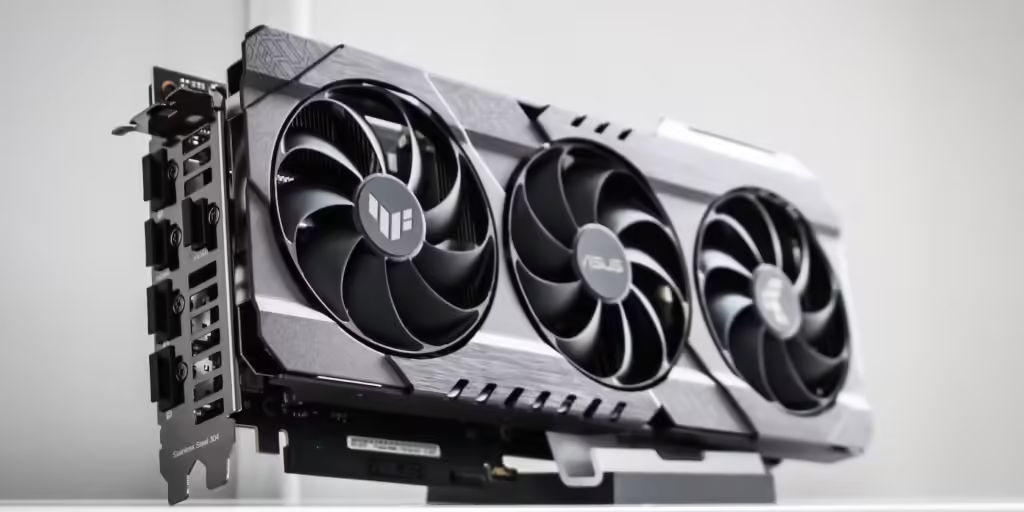
FAQs:
1. Does 57°C mean my GPU is running too fast?
No, 57°C doesn’t mean your GPU is running too fast. It indicates normal operation for moderate tasks.
2. Can a power supply issue cause my GPU to run at 57°C?
No, a power supply issue is unlikely to cause a GPU to run at 57°C unless it affects the cooling system.
3. Is 57°C suitable for laptops with built-in GPUs?
Yes, 57°C is a good temperature for laptop GPUs during regular use or light gaming.
4. Does running multiple monitors keep my GPU at 57°C?
Using multiple monitors can increase the workload slightly, but 57°C is still safe and normal for this usage.
5. Can 57°C damage the GPU’s VRAM?
No, 57°C is far below the temperature that could harm GPU VRAM or other components.
6. Is 57°C possible with passive cooling systems?
Yes, but only in well-ventilated environments or under light workloads, as passive cooling relies on airflow.
7. Does undervolting affect GPU temperature to stay at 57°C?
Yes, undervolting can help reduce GPU temperature, possibly maintaining it around 57°C under moderate load.
8. Can high humidity impact a GPU running at 57°C?
High humidity doesn’t directly affect the temperature but can impact the cooling system over time if not managed.
9. Is 57°C common for GPUs with ray tracing enabled?
For light ray tracing tasks, 57°C is possible, but heavier workloads typically result in higher temperatures.
10. Can my GPU’s performance drop if it stays at 57°C for too long?
No, staying at 57°C does not negatively affect GPU performance. It is a safe and efficient temperature for extended use.
Conclusion:
In conclusion, no, 57°C is not hot for a GPU. It is within the safe and normal temperature range for most GPUs, even during heavy gaming or moderate tasks. Modern GPUs are designed to operate efficiently up to 85°C without issues. A temperature of 57°C indicates good cooling and optimal performance, ensuring the GPU remains reliable and healthy over time.
Related Posts:
- Is 60 Degrees Celsius Hot For A GPU – Keep Your GPU Cool!
- What Should GPU Temp Be While Gaming – Keep GPU Cool Now!
- What Temperature Is Bad For GPU – Protect Your GPU Today!
- What Should My GPU Temperature Be – Stay Cool, Check GPU!
Henry Smith is a GPU expert with over five years of experience in GPU repair and troubleshooting. As the founder and lead writer of Techicores.com, he provides clear and practical advice on graphics cards to help readers solve problems and make smart upgrade decisions. His passion for hardware and commitment to quality have made Techicores a trusted resource for tech users worldwide.

